#knottys math art
Explore tagged Tumblr posts
Text
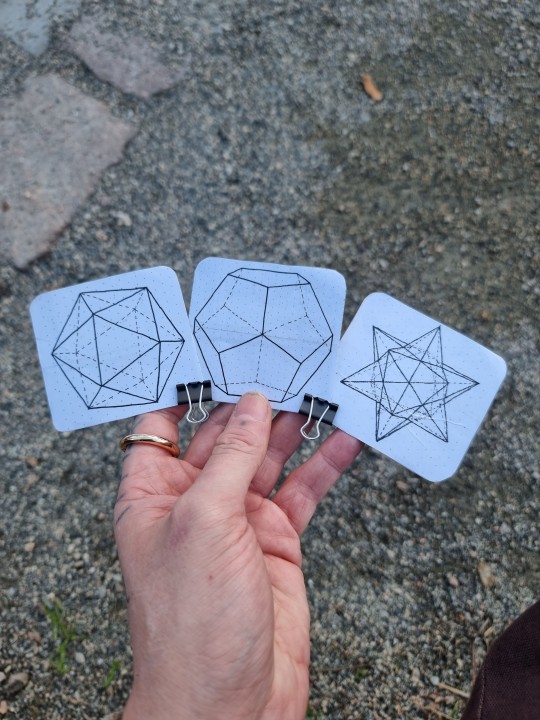
Polyhedron cards
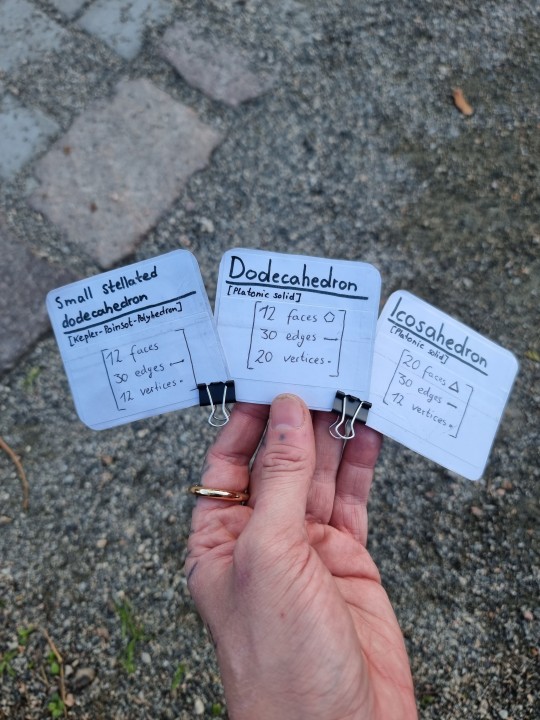
#polyhedra#polyhedron#geometry#shapes#knottys mathy stuffy#knottys math art#math art#stim toy#math love#math passion#math happiness#math#art#isometric#cards
191 notes
·
View notes
Text
By: Mark Goldblatt
Published: Feb 7, 2023
Several years ago, in the pre-pandemic world of in-person meetings, a newly hired colleague at Fashion Institute of Technology proposed an LGBT-themed sociology course before the School of Liberal Arts. This is a necessary step in getting the course approved by the college-wide curriculum committee. It’s a time for constructive feedback and occasional tweaking before the final committee vote.
It was a good course. The proposal was clear and concise, indicating not only a command of the relevant literature but a sensitivity to students’ interests, expectations, and ability to handle the workload. But I noticed an apparently minor, easily correctable issue. Among the learning outcomes listed was a requirement that students develop a greater acceptance of LGBTQ+ perspectives and rights. That struck me as problematic. I happen to think that such acceptance is a good thing, but to stipulate it as a learning outcome raises a knotty question. If a student masters the course material, turns in the required work, and passes the exams, but doesn’t exhibit that acceptance, is he going to fail?
After expressing my general admiration for the course, I raised my misgiving in the following way (and this is nearly an exact quote): “We need to keep in mind that we’re a state university. Our mission is to pursue, ascertain, and disseminate objective truth, and to equip our students to do the same. Given that mission, I don’t think we can list a learning outcome that requires students’ assent on a matter of personal morality. The other learning outcomes are fine. You don’t need that one, so I’d just cut it.” My colleague was fresh out of graduate school and not yet tenured, which (theoretically) put her in a vulnerable position. Nevertheless, she became apoplectic; so angry, in fact, that she had difficulty getting out her first sentence. “I can’t believe people still think that way!” she spluttered. “Queer Theory has deconstructed objectivity!”
Her words hung in the air as I glanced around the room. Not a single faculty member, not even those in math or sciences, seemed fazed by her categorical statement. Since I was a tenured professor, I was reluctant to debate an untenured colleague during a school meeting. So, I let the matter drop. The course was approved without revision by the School of Liberal Arts, and went on to gain approval by the curriculum committee. And that is how my college got into the business of winning converts.
That moment haunts me as I begin my final semester before retirement—not only because faculty on the state payroll have deliberately crossed the critical line from pursuing the truth to professing The Way, but also because the Enlightenment sensibility that finds such mission creep objectionable seems to be passing from the scene. The “deconstructive turn”—as the critic Christopher Norris once called it—is nothing more than a verbal sleight-of-hand. It invites us to tease out secondary and tertiary senses of words to show how a text contradicts what it seems to be saying, free-associate our way to philosophical banalities or outright non-sequiturs, and finally glaze the mishmash with a layer of impenetrable jargon. If a reader is foolish enough to attempt to make sense of what is being said, he’ll get bogged down before he can figure out nothing is being said at all.
When Jacques Derrida, the renowned “father of deconstruction,” was awarded an honorary degree by Cambridge University in 1992, 20 of the world’s preeminent philosophers—including W.V. Quine and Ruth Barcan Marcus—signed a letter of protest, in which they argued:
M. Derrida describes himself as a philosopher, and his writings do indeed bear some marks of writings in that discipline. … In the eyes of philosophers, and certainly those working in leading departments of philosophy throughout the world, M. Derrida’s work does not meet accepted standards of clarity and rigor. … M. Derrida seems to us to have come close to making a career out of what we regard as translating into the academic sphere tricks and gimmicks similar to those of the Dadaists. … Many French philosophers see in M. Derrida only cause for embarrassment, his antics having contributed significantly to the widespread impression that contemporary French philosophy is little more than an object of ridicule.
The claim that Queer Theory has “deconstructed objectivity” means only that a certain number of academic performance artists have doodled with a cluster of words related to the concept of objectivity in order to gain university employment, win friends, and influence a distressingly large number of gullible fans. But no epistemological breakthrough has come of their efforts: if it had, it would be self-refuting since it would consist of an objective truth about the impossibility of objectivity. (At a lecture I attended 40 years ago, a debonair British postmodernist stated that Derrida had shown us how it was possible to formulate a consistent argument with a contradiction in it. When I inquired how, in that case, we could recognize an inconsistent argument, the question was met with actual hisses from his acolytes. I’m still waiting for an answer.)
Objectively true statements are still made on a regular basis. The statement “Objectively true statements are still made on a regular basis” is itself objectively true. And Queer Theorists make objective truth claims all the time—as when they cite statistical evidence of harms visited upon the LGBT community or proving the reality of climate change. One of the silent faculty members at the meeting I mentioned, also near retirement, had devoted his entire distinguished career to combatting the effects of global warming. You’d think he’d be miffed at the suggestion that such effects were not objectively real. But no, he just sat in silence like everyone else.
Either he didn’t understand or didn’t take seriously the implications of what our new colleague was saying. The latter possibility seems the far likelier one. My sense, based on hundreds of informal conversations I’ve had with STEM faculty, is that people working in the hard sciences tend to roll their eyes at the alleged insights of postmodernism. They inhabit a world in which truth is still gauged by correspondence between belief and reality, and in which reality exists independently of our beliefs about it. Generally speaking, they don’t give a rat’s ass about discourse communities and meta-narratives. They want to know if the equations balance, if the instruments work, and if their hypotheses match empirical outcomes. In other words, they are interested in discovering if what they believe to be true is objectively true. They are certainly not interested in the ethnicity, sexuality, or gender identity of the people making truth claims.
Put all of that together, and you’ve got the makings of a schism. The humanities and social sciences are undergoing a mission reversion—they’re returning to a pre-Enlightenment view of the purpose of higher education. Prior to the Enlightenment, universities were sites of religious instruction that trained clergy. Harvard was founded in 1636, a mere six years after the settlement of Massachusetts Bay, to ensure that future generations of New England Puritans would be served by learned ministers. That goal is found among Harvard’s original “Rules and Precepts”:
Let every Student be plainly instructed, and earnestly pressed to consider well, the maine end of his life and studies is, to know God and Jesus Christ which is eternal life (John 17:3) and therefore to lay Christ in the bottome [i.e., at the base of the boat, to keep it steady in the water], as the only foundation of all sound knowledge and Learning.
That’s a version of what we’re seeing with the rise of the subjectivist movement in the humanities and social sciences. It is a new secular faith, a version of The Way. Instruction in radical progressive curricula is baptism by accreditation. It’s witness and testing. You gather for three hours a week to dwell in the spirit, commit yourself to individual rituals and collective causes, despair the fallen state of humanity, call out and cast out demons, immerse yourself in sacred texts and memorize venerable chants, then venture forth to spread the gospel. The end is performative, sacramental. Let me tell you the many ways you’re oppressed so that you may be a river to the masses.
Increasingly, that is the state of the humanities and social sciences at public universities in the US. Whatever you think of that development, it signals an existential crisis for higher education because instruction in the STEM fields at American universities remains traditional, objectively focused, and globally competitive. The reversion of the humanities and social sciences to religious preparation cannot coexist indefinitely with the Enlightenment mission of STEM instruction. Something has to give.
What, for example, becomes of science textbooks that report that only female mammals give birth? (Pity the poor seahorse, hitherto famous as the only species in which the male gives birth. But for how long?) You cannot be told in your morning sociology seminar that the pursuit of objectivity is an instrument of white supremacist culture, which must therefore be deconstructed, and then be told in your afternoon biology class that identical twins are objectively always the same sex.
It’s natural to expect the demand for severing ties to come from the professoriate on the STEM side, from a desire not to be sidetracked in their pursuit of objective truth. More likely, though, as evidenced by that liberal arts meeting at FIT, the demand will come from the humanities and social science side, caused by the unbearable adjacency of reality-based standards and scholarship to the postmodern insistence that the demand for objectivity is oppressive.
Entrance into STEM fields requires rigorous standards of assessment, as does progression and graduation. Rigorous standards of assessment, however, don’t produce equity or (objectively!) diverse student populations. Asian students are currently overrepresented in STEM, black students underrepresented; male students are overrepresented, female students underrepresented. According to the tenets of progressive activism, demographic imbalances of that nature constitute de facto proof of racial and gender bias since in an unbiased system every demographic would be proportionally represented. How long will student activists, encouraged by humanities and social science faculty, tolerate this alleged injustice on their campuses?
The disintegration of academia is coming. Whichever side precipitates the break, it will be a necessary development. Higher education is a serious intellectual endeavor, and nothing is less intellectually serious in contemporary academia than the suggestion that the pursuit of objectivity has been discredited. Empirical observation, mathematical inquiry, inductive and deductive reasoning, and falsifiability are the sine qua nons of higher education. As courses of study in the humanities and social sciences depart from such things, they cease to be higher education in the Enlightenment sense.
[ Via: https://archive.is/vQvgg ]
==
It's pivotal moments like this that inform what comes next. That realization something was really wrong here, with that hesitation, that second-guessing, that telling the truth might upset them, that it would just be easier to let this one slide, that instinct to just go along to get along, and the creeping recognition a group delusion was going on.
Who would have thought that the downfall of western academia could be powered by the worst, most pretentious and puerile French philosophy which can be encapulated as an academic formalization of the Equivocation Fallacy, and language games worthy of a 7 year old who just discovered a book of knock-knock jokes?
It was a mistake to think that nobody would take this seriously. It was a mistake to think that it wouldn't leak out of the bogus Fantasy Studies domains within Humanities which they'd invented and credentialed themselves in. And it was damn sure a mistake to give them a seat at the grown-ups table as far as knowledge claims and knowledge production.
To paraphrase Sam Harris, those who reject objective reality belong at the margins of our societies, not in our halls of knowledge.
Denying objective reality should be regarded as an announcement they do not live in it. This is a definition of delusional, not a definition of intellectual.
#Mark Goldblatt#objective truth#objective reality#objectivity#postmodernism#deconstruction#word games#language games#language manipulation#subjective reality#lived experience#science#STEM#corruption of education#corruption of knowledge#Jacques Derrida#subjectivism#postmodern philosophy#postmodern nonsense#Enlightenment values#Enlightenment#evidence#reason#religion is a mental illness
25 notes
·
View notes
Text
Holy Red Wagon- Bruiser & Bicycle

As the 2020s continue to progress it feels increasingly apparent that the indie sleaze revivalism isn't going to die anytime soon. For every great record that draws from anything even remotely in this realm (this year's example being Dogsbody, the excellent debut LP by Model/Actriz) there are dozens more that aspire to the hedonistic highs of Brooklyn's mid-aughts DFA greats without any of the ingenuity, talent, or personality of bands like Black Dice or Liars. While it's hard to say what indie micro-trend will be "revitalized" with any real kind of legitimacy through the lens of nostalgia cycles next, Albany's Bruiser & Bicycle make a strong case for a return to the freak-folk of the mid-aughts. While the vocal mannerisms of Bruiser & Bicycle may never escape those Animal Collective comparisons (while sonically there are shades of mid aughts art rock outfits like Deerhoof, Battles, Ponytail, etc) their imaginative 2nd LP, Holy Red Wagon, is far more than just a pastiche of yesterday's arty Brooklyn touchstones. On HRW, B&B draw on a wide palette of experimental strains of rock and pop, but sound beholden to no one but the vast expanse of their whims alone.
B&B began as the duo of songwriters Nick Whittemore and Keegan Graziane, and their 2019 debut, Woods Come Find Me, struck much closer to freak-folk proper with wispy song structures, propulsive acoustic guitar strumming, cavernous reverb, and a plethora of negative space. For HRW they recruited Joe Taurone on drums, which naturally added quite a bit of comparable heft and dimension to these songs, like Joe's chugging breakbeat on "Lunette Fields Speak" or his pensive snare rhythm that gives way to an infectious series of rolls throughout the hook of closer "We Thought the Sky". But the biggest leap forward on HRW in general is the widened scope of Nick and Keegan's songwriting, which doesn't entirely abandon the freak-folk stylings of their earliest work but finds them incorporating psychedelic pop, art-rock, math-rock, emo, and straight up indie rock into the fold. There are no songs shorter than 5 minutes, which comes across far more by necessity to give these ideas the space to develop than any kind of obtuse disposition. These songs are technically dazzling yet still giddy with the possibility of sound, and never come across as belabored academic exercises despite some considerable chops from the band's 3 members.
The songs on HRW are easily the most ambitious and adventurous that B&B have ever written, but the playful energy that they exude gives them an appeal far behind their considerable scope. The knotty rhythms of "Cinnabar Alter" and "1000 Engines" are complimented by bright vocal harmonies that coalesce into sharp hooks that never succumb to the weight of their complex foundations, while songs like "Rats Come to Play" and "Lunette Fields Speak" are by no means straightforward, but place a premium on the band's impressive command of melody. Opener "Aerial Shipyards" opens to a procession of wordless wails that practically beg for those AnCo comparisons, but it quickly locks into a mathy groove accentuated by brisk cowbell and finger snaps while the vocal melodies progress into a jovial sing-along that loses none of its luster throughout the song's spellbinding 7 and a half minutes. Closer "We Thought the Sky" is a steady march accentuated by rapid-fire snare fills that eventually blossoms into a psych-pop free-fall punctuated by lively vocal melodies that close things out. On HRW, B&B offer a rich sonic tapestry far beyond the rigid sonic parameters of their debut, one that gives plenty of reason to believe that they're onto something special.
Essentials: “We Thought the Sky”, “Cinnabar Altar”, “Aerial Shipyards”
1 note
·
View note
Text
Battles - 'Gloss Drop'

CD - 2011 Warp Records
#battles#gloss drop#second album#indie rock#neo prog#post rock#experimental rock#math rock#cerebral#eccentric#knotty#fun#gary numan#kazu makino#blonde redhead#yamantaka eye#matius aguayo#nyc#new york#album art#album cover#warp records
11 notes
·
View notes
Text
Headcannons for the main 4(5?)
Mario, Luigi, Peach and Bowser + Jr/ Koopaling's as well. these are my personal headcannons and this is just for fun. what are your headcannons?
WARNING/TW/CW for: swearing, implied/bullying, scares, self-h*rm/depression
Mario (cis, He/Him, Straight)
- the reason his moustache is so different compared to Luigi's is because due to all the fights he gets in he doesn't brush it or his hair that often leaving it to get knotty
- his hair use to be curly but due to immense brushing and many fights over the years it turned straight
- social butterfly since he was born
- he loves adventure
- has many scars all over his body but he see's them as trophies/achievements then a bad thing
- he's not the best cook in the world but he can still make a few good things when he can (he has a MASSIVE sweet tooth and mainly makes deserts or sweeter things)
- he talks mainly English now but, due to Luigi speaking Italian at home, he does speak Italian at home but he's not limited to it
- he does welding! he can make beautiful sculptures and Peach has many in her royal gardens
Luigi (trans, He/Him/They, Gay)
- His hair is soft and fluffy with soft curls due to him not going on adventures much and he takes a lot of time for caring for himself
- he use to be a social butterfly but that got him the wrong attention and now has a pretty low self-esteem
- doesn't have the best way of coping with things and takes things to heart a lot (he has self-h*arm scares)
- he doesn't mind adventure its just that it drains him so much
- he and E.gadd stay in touch throughout the year for updates on King Boo and if there's anything that needs to be sorted (he goes to E.gadd if Polterpup is having issues)
- he loves to bake/cook! and he's really good at it. he cooks many types of meal but he likes to try and stay traditional
- he also does gardening and loves to talk about flower language
- he speaks only Italian unless there are guest/people he needs to talk to
- he also isn't the best when it comes to English and has some difficulty in writing and reading as well as some words he cant pronounce properly
- in fact he and bowser write letters to each other and he gets better over time (and flustered with how sweet Bowser is to him)
- loves dresses and will wear them when he can
Peach (cis, She/Her/They, Pan)
- although she normally has her hair out she loves to do many hair styles! space buns, braids and so many more!
- she's very open towards people but sometimes she just cant and has to take a break
- sick of Bowser's shit
- can speak English and Japanese and is now onto learning Italian (may or may not be to impress Mario ;)
- she's really good at baking. she and Luigi share recipes to try out
- she donates a lot of money to people in need (one of the main reasons most people like her, she's just really nice!)
- does rock climbing in her spar time (do NOT challenge her)
Bowser (cis, He/Him, Bi)
- #1 Dad
- his hair is a mess let me tell you
- brushing it out can take hours since he complains about it a lot
- may act tough but he's a softy
- when every he needs to take most of the kids somewhere he lets them climb on his back
- doesn't know how to cook anything more then a basic meal
- He's really good at English and is perfect at it. just don't let him write anything when he's tired it gets really weird (poor Luigi had to read some cryptic things)
- Kamek is his Dad and Kamek is also sick of his shit
- the spikes on his jewellery (?) are actually made of foam as to not hurt his kids when they go up to hug him
Jr (cis, He/Him, I don't think he knows his yet)
- C H A O S
- has too much energy and most people have trouble getting him to bed, takes about an hour or two
- Luigi can get him to sleep in about 20 minutes due to him swaying gently and humming
- he's really good at art! almost every form he can master
- he doesn't like most school subjects but he does like science, art and a surprise to most, maths!
- he and the koopaling's play pranks on anyone they can
- the koopalings are his siblings and their favourite song is 'Kidnap the Sandy Claws' from the Nightmare Before Christmas
And that's all for now! I hope you didn't mind the long post and how different it is compared to what I normally do here. if you have any questions or things you would like to add on please do so! (im really lonely please just say something)
#bowser#bowser jr#mario headcanons#luigi nintendo#luigi#mario nintendo#mario#peach toadstool#peach#koopalings#implied bowuigi#bowuigi#kamek#this was fun#please say hi
148 notes
·
View notes
Text

Every Record I Own - Day 555: Helms Alee Noctiluca
This is the bio I wrote for Helms Alee’s fifth album.
Noctiluca is a bioluminescent marine algae that glows when excited. For years, Helms Alee drummer/vocalist Hozoji Matheson-Margullis kept a beaker of it by her bedside and would tap on it at night to light up her room. The ocean has always been a recurring theme with Helms Alee, whether in the nautical nod of their moniker or in album artwork like Sleepwalking Sailors, though these fascinations are perhaps unavoidable for the trio given their lives spent on the Puget Sound estuary. But for their fifth album Noctiluca, the marine reference is perhaps the closest approximation to their sound: mysterious, magical, and providing light in the darkness.
Noctiluca continues Helms Alee’s tradition of blending girthy sludge riffs, deceptively clever compositions, lush instrumentation, and transcendental melodies into a potent standalone sound. Starting with album opener “Interachnid”, the band displays their multifaceted approach with eight-armed drum patterns underpinning thunderous walls of fuzz distortion provided by bassist Dana James and guitarist Ben Verellen, with Verellen’s barrel-chested roar serving as a counterpoint to the siren song vocals provided by Mathenson-Margullis and James. The balance between knuckle-dragging force and transcendent beauty fluctuates throughout the record, with songs like “Beat Up” operating on single-minded aggression, while songs like “Pandemic” completely eschew the heavy-handed approach in favor of blissed out dream pop.
Helms Alee have always been able to jump between the sublime and the savage—like they’re rewriting “Don’t Fear the Reaper” for cerebral indie rock and art metal crowds—but with the aid of producer/engineer Sam Bell (Minus the Bear, R.E.M., The Cars), the band pushes their various methods to new extremes on Noctiluca. Lead single “Spider Jar” still sounds like the more subdued side of Helms Alee in many ways—jangling Jazzmaster guitars and tom-heavy drum patterns set against soaring vocals—but never before has the band sounded so authoritative with such straightforward arrangements. For the longtime fans, their blend of proto-grunge grit, The Breeders’ dynamics, and Chavez’s pop metallurgy is deftly explored on haunting tracks like “Be Rad Tomorrow” and “Illegal Guardian” with a new emphasis on giving the songs additional space to breathe. The album closes with a bang as “Word Problem” barrels away with a brutally heavy knotty off-time riff while Verellen and James switch off between harrowingly bellowed verses and bewitching choruses.
At no point during their 12-year career has Helms Alee ever been the band of the moment, though the world would arguably be a better place for it. Instead, the Puget Sound trio has adhered to the tried-and-true traditions of the Pacific Northwest’s underground rock community—hole up in the practice space on rainy days, dime your amps, find some way of wrangling beauty out of the chronic gray skies, and pour everything you’ve got into your live shows. They’ve thrived not off any sort of niche tribalism, theatrics, or image cultivation, but by simply being a really fucking good band. And while their music may have eluded mainstream audiences, they’ve earned a reputation for being a band’s band. Whether being handpicked tourmates for artists as disparate as Melvins and Minus the Bear or included in carefully curated festivals like the metal summits at Roadburn and Psycho Las Vegas or the math-rock and post-everything bonanza ArcTanGent, Helms Alee’s balance of burly riffage, majestic melodies, and three-part vocal interplay continues to beguile heady rock fans.
After more than a decade of existence, five studio albums, and a slew of EPs, it’s easy to imagine Helms Alee continuing on in perpetuity as one of those tightly guarded cult artists with an extensive catalog of treasures just waiting for the uninitiated to discover the depths of their riches. Whether Noctiluca broadens Helms Alee’s base or simply reinforces their loyal following, it will do its namesake service by continuing to fervently glow in the hidden pockets of our world.
7 notes
·
View notes
Text
I hate any meta discussion where I have to start out by admitting that what I like is Bad.
I don't mean Bad in a moral sense (though apparently there are parts of the internet that fret about that sort of thing). But I mean Bad in a technical sense: you have to point out that the thing you like had bad writing, or flat designs, or whatever, before you are allowed to talk about it further.
For instance: if you say you liked the TV show Lost, you have to immediately follow it up with "but I know the plot was total nonsense after season 2, of course, I just mean I thought its character writing was innovative." If you do not admit to this glaring technical flaw, if you don't hem and haw and look a little embarrassed, then you're dismissed as someone with bad taste, one of those weebs, and why should anyone listen to you? But if you perform your ablutions correctly, then maybe (maybe!) they will deign to listen to the latter bit, hear what you like about the thing, and open their mind a bit to a new possibility: the Bad thing has some Good in it.
And I hate doing this.
And it's not because I disagree, even, and it's not because I'm lying—not quite. When I say "Lost is bad", i'm saying "Lost is bad [according to the rubric that mainstream modern narratives use]," and of course it's bad by that standard. The plot is nonsense. Shit doesn't make sense.
But that standard is boring. I'm more interested in the rubric I'm using, which is that primal, elemental thing we all have when we're taking in art: I like what I like. I saw it and I ate it. "This is the way it feels to me. Can you understand what I’m saying? Does it also feel this way to you?”
During Lost's run, I was so befuddled by people who got angrier and angrier at the plot, who sat around trying to decode the damn lottery numbers or whatever, because that was never the point of the show, to me. I loved the spectacle and the characters and the gleeful sense of abandon that permeated so many of the arcs. I loved the whole package.
Having to fucking rag on it, just to talk about it, always feels faintly depressing.
And of course I can play the game, talk the talk, identify what Good Writing is with the rest of them. I'm not above pettiness; I've read knotty technical takedowns of novels that I hated, so that I could feel Good and Smug about why I hated it. I've ragged on the utter shallowness of various video game plots for twenty-page college term papers, just to prove to some professor that I understood what Good Writing is. Done it with plenty of books, too. But this sort of thing always feels a bit erudite, too removed, too tedious, one step removed from what I really want to be talking about.
And of course it's useful to be familiar with those standards, if you're a creator. If you want your work to reach more people, if you want to attract the interest of major publishers, then hewing more closely to The Mainstream Rubric is just plain pragmatic. Translating a feeling into a piece of art, and actually making other people feel that thing, is really fucking hard, and most of the time your quirky bullshit is getting in the way rather than enhancing the viewer's understanding.
But, but, but.
I'm just saying, you don't have to like shit for the Right Reasons, you don't have to like Good Writing and hate Bad Writing; you can just like stuff. (And I've long suspected folks absolute favorite books are always "imperfect" in some way—a smoothly-oiled-machine of a narrative is a wonder to behold, but something quirky and offbeat and not-quite-Good has much more to endear you.)
And that's how falling in love with people works, after all; you don't look at a lover and think "but their nose is too big and they're bad at math and they're a little lazy in the mornings" before telling people about 'em. You just love the Them, the whole package, usually. And that's fine.
#closely related: i hate when people say if you like [x] in y narrative but dislike it in z narrative then you're a hypocrite#like yeah sometimes it's hypocricy#sometimes it's also one of a million little factors#i was fine with Lost having a shit plot#i'm not fine with the rest of my TV having a shit plot#also closely related: that post i did a while back about how fanfiction has quirky shit#that would never make it into a Published Novel#but nonetheless is what i LOVE about fanfic as a form#not everyone cares about the same shit in a narrative#people care about shit at different points in their life#blah blah blah#this is probably part of why i write more fanfic than meta:#i'm interested in my personal what-ifs and feelings on the material#discussion of the technicalities and logistics is fun and i do read them and enjoy them#but they just aren't my kind of thing to write on the regular
13 notes
·
View notes
Text
R vs. Python for Data Science
Hello! This Web page is aimed at shedding some light on the perennial R-vs.-Python debates in the Data Science community. As a professional computer scientist and statistician, I hope to shed some useful light on the topic.
I have potential bias: I've written four R-related books, I've given keynote talks at useR! and other R conferences; I currently serve as Editor-in-Chief of the R Journal; etc. But I am also an enthusiastic Python coder, have been for many years. I hope this analysis will be considered fair and helpful. Elegance
Clear win for Python.
This is subjective, of course, but having written (and taught) in many different programming languages, I really appreciate Python's greatly reduced use of parentheses and braces:
if x > y:
z = 5
w = 8
vs.
if (x > y)
{
z = 5
w = 8
}
Python is sleek!
Learning curve
Huge win for R.
This is of particular interest to me, as an educator. I've taught a number of subjects -- math, stat, CS and even English As a Second Language -- and have given intense thought to the learning process for many, many years.
To even get started in Data Science with Python, one must learn a lot of material not in base Python, e.g., NumPy, Pandas and matplotlib. These libraries require a fair amount of computer systems sophistication.
By contrast, matrix types and basic graphics are built-in to base R. The novice can be doing simple data analyses within minutes.
Python libraries can be tricky to configure, even for the systems-savvy, while most R packages run right out of the box.
Available libraries for Data Science
Slight edge to R.
CRAN has over 14,000 packages. PyPI has over 183,000, but it seems thin on Data Science.
For example, I once needed code to do fast calculation of nearest-neighbors of a given data point. (NOT code using that to do classification.) I was able to immediately find not one but two packages in CRAN to do this. By contrast, recently I tried to find nearest-neighbor code for Python and at least with my cursory search in PyPi, came up empty-handed; there was just one implementation that described itself as simple and straightforward, nothing fast.
The following (again, cursory) searches in PyPI turned up nothing: EM algorithm; log-linear model; Poisson regression; instrumental variables; spatial data; familywise error rate; etc.
This is not to say no Python libraries exist for these things; I am simply saying that they are not easily found in PyPI, whereas it is easy to find them in CRAN.
And the fact that R has a canonical package structure is a big advantage. When installing a new package, one knows exactly what to expect. Similarly, R's generic functions are an enormous plus for R. When I'm using a new package, I know that I can probably use print(), plot(), summary(), and so on, while I am exploring; All these form a "universal language" for packages.
Machine learning
Slight edge to Python here.
The R-vs.-Python debate is largely a statistics-vs.-CS debate, and since most research in neural networks has come from CS, available software for NNs is mostly in Python. RStudio has done some excellent work in developing a Keras implementation, but so far R is limited in this realm.
On the other hand, random forest research has been mainly pursued by the stat community, and in this realm I'd submit that R has the superior software. R also has excellent packages for gradient boosting.
I give the edge to Python here because for many people, machine learning means NNs.
Statistical sophistication
Big win for R.
In my book, the Art of R Programming, I made the statement, "R is written by statisticians, for statisticians," a line which I've been pleased to see used by others on occasion. It's important!
To be frank, I find the machine learning people, who mostly advocate Python, often have a poor understanding of, and in some cases even a disdain for, the statistical issues in ML. I was shocked recently, for instance, to see one of the most prominent ML people state in his otherwise superb book that standardizing the data to mean-0, variance-1 means one is assuming the data are Gaussian — absolutely false and misleading.
Parallel computation
Let's call it a tie.
Neither the base version of R nor Python have good support for multicore computation. Threads in Python are nice for I/O, but multicore computation using them is impossible, due to the infamous Global Interpreter Lock. Python's multiprocessing package is not a good workaround, nor is R's 'parallel' package. External libraries supporting cluster computation are OK in both languages.
Currently Python has better interfaces to GPUs.
C/C++ interface and performance enhancement
Slight win for R.
Though there are tools like SWIG etc. for interfacing Python to C/C++, as far is I know there is nothing remotely as powerful as R's Rcpp for this at present. The Pybind11 package is being developed.
In addition, R's new ALTREP idea has great potential for enhancing performance and usability.
On the other hand, the Cython and PyPy variants of Python can in some cases obviate the need for explicit C/C++ interface in the first place; indeed some would say Cython IS a C/C++ interface.
Object orientation, metaprogramming
Slight win for R.
For instance, though functions are objects in both languages, R takes that further than does Python. Whenever I work in Python, I'm annoyed by the fact that I cannot directly print a function to the terminal or edit it, which I do a lot in R.
Python has just one OOP paradigm. In R, you have your choice of several (S3, S4, R6 etc.), though some may debate whether this is a good thing.
Given R's magic metaprogramming features (code that produces code), computer scientists ought to be drooling over R. But most CS people are unaware of it.
Language unity
Sad loss for R.
Python is currently undergoing a transition from version 2.7 to 3.x. This will cause some disruption, but nothing too elaborate.
By contrast, R is rapidly devolving into two mutually unintelligible dialects, ordinary R and the Tidyverse. I, as a seasoned R programmer, cannot read Tidy code, as it calls numerous Tidyverse functions that I don't know. Conversely, as one person in the Twitter discussion of this document noted (approvingly), "One can code in the Tidyverse while knowing very little R."
I've been a skeptic on Tidyverse. For instance,I question the claim that it makes R more accessible to nonprogrammers.
Linked data structures
Win for Python.
Not a big issue in Data Science, but it does come up in some contexts.
Classical computer science data structures, e.g. binary trees, are easy to implement in Python. It is not part of base R, but can be done in various ways, e.g. the datastructures package, which wraps the widely-used Boost C++ library.
Online help
Big win for R.
To begin with, R's basic help() function is much more informative than Python's. It's nicely supplemented by example(). And most important, the custom of writing vignettes in R packages makes R a hands-down winner in this aspect.
R/Python interoperability
RStudio is to be commended for developing the reticulate package, to serve as a bridge between Python and R. It's an outstanding effort, and works well for pure computation. But as far as I can tell, it does not solve the knotty problems that arise in Python, e.g. virtual environments and the like.
At present, I do not recommend writing mixed Python/R code.[Source]-https://github.com/matloff/R-vs.-Python-for-Data-Science
Advanced level python course with 100% Job Assistance Guarantee Provided. We Have 3 Sessions Per Week And 90 Hours Certified Basic Python Classes In Thane Training Offered By Asterix Solution
0 notes
Text
Build Something!
As many of you know, woodworking is one of my hobbies (chores if my wife makes me do it). In the grand scheme I'd say I'm certainly an amateur, but I've still built things that I'm proud of. And whatever your skill level may be, it can be such a rewarding endeavor (not to mention a money saver). Anyone's who's relished in the sweet smell of fresh cut cedar or had their eyes open wide when they apply that first coat of stain and watch that grain come to life knows what I mean. It just makes you want to make more. Whether they're trinkets or decorations or furniture, my house or other people’s homes are starting to get littered with products of my wood shop (garage).
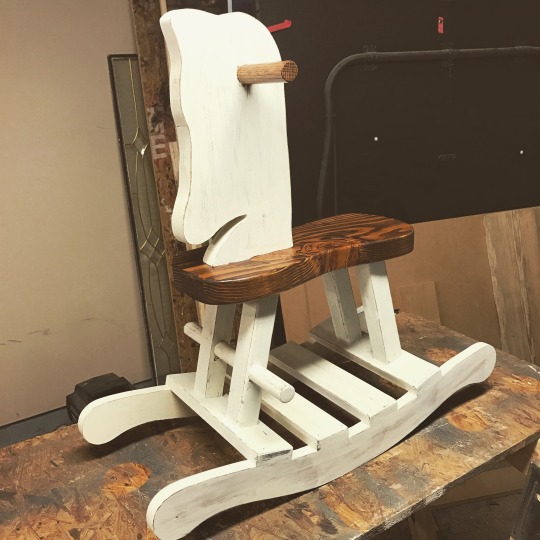

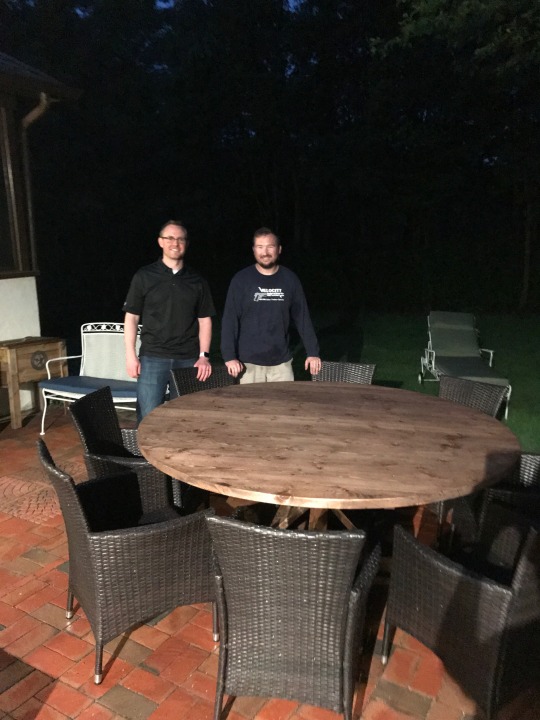

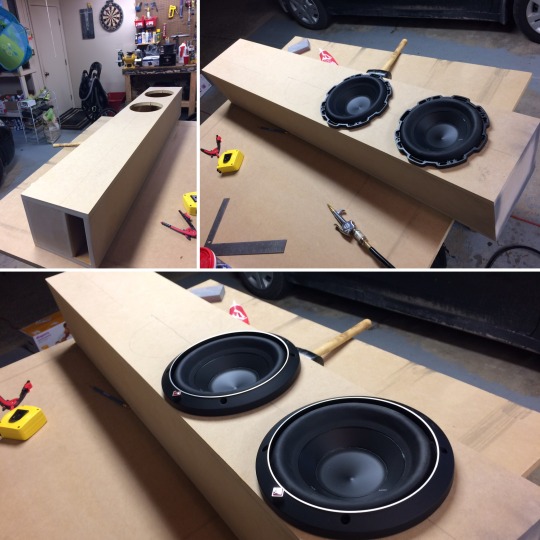

Whenever I build something new, I inevitably get asked from others one of two, if not both questions:
1. Can you make me one? (Quick answer: Yes, if you help out, supply (or pay for) materials, and provide the beer.
2. How did you get started doing this (and how can I start doing this)?
I'll use this post to answer question 2 and hopefully get you on the path of making some sweet sawdust of your own!
A. Get some tools and supplies. When possible, get power tools. Power makes the world go round. NOTE: I'm only going to list building tools and supplies. Finishing supplies is a whole other can of worms.
Mandatory:
Wood -- Duh. I have found that all kinds of beautiful things can be made out of cheap construction timbers (knotty pine) with a little finesse. Birch plywood is great for large panels and looks beautiful with stain. MDF is also a great material for large panels, but you can’t stain it (gotta paint it), you better pre-drill your screw holes, and it makes a awful mess when you cut it. Cut it outside and wear a mask. Beyond that, you can spend as much as you want on higher end boards like poplar, oak, maple, walnut, cherry, etc... but prepare for a little sticker shock if you need several board feet.
Tape measure and speed square -- these will let you accurately measure out and mark cut lines. The speed square can also be used as a handy fence to make quick and straight cross cuts with a circular saw.
Hammer and rubber mallet -- uses of the hammer are obvious. The rubber mallet is very handy for "coaxing" tight pieces into place without marring them.
Safety glasses, ear protection, and shop apron -- self explanatory.
Clamps, clamps, and more clamps -- a woodworker can never have enough clamps. You can get a lot done with a variety of sizes of bar clamps, C clamps, and spring clamps. To save some dough, pick up the cheapies at Harbor Freight. I've got tons of them and they've served me well. Seriously, get a lot of clamps.
A supply of wood glue and nails/fasteners -- TiteBond II is the glue you want. Just always have some on hand. The fasteners will accumulate as you buy more for specific projects.
Cordless Drill/driver -- Any homeowner should already own a decent one. Bonus point if you pick up an impact driver. While not necessary, an impact driver makes driving large screws a breeze and makes stripped out heads a thing if the past. Once I used one I wondered how I lived without it. Of course with these tools you'll need an assortment of drill bits and driving bits. They can be bought in affordable kits. In my experience, Ryobi bits suck.
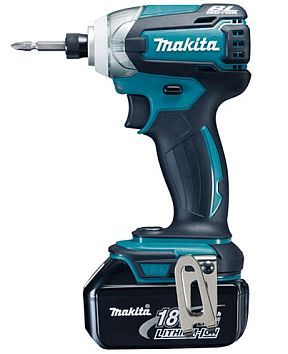
Circular saw or Jig Saw -- A circular saw (go corded to start out) is very versatile and can perform a variety of cuts... except curved cuts. A jig saw excels in making curved cuts in thinner materials and smaller, more intricate cuts (good for arts and crafts). I'd start out with a circular saw and perhaps add the jig saw as funds become available.
Power Sander -- Some may argue this is optional, but F that. Life is too short to sand shit by hand. Get either a pad sander or random orbital sander and a variety of sanding disks or paper. 80, 150, and 220 grit (or close to those numbers) should cover 98% of your sanding needs.
Cold beer and tunes -- what fun is working in the garage without a pop and Metallica in the background?
Optional:
Kreg Pocket Hole Jig -- I suppose this is one of the "optional" items, but seriously, just spend $100 and buy the K4 system. It is basically "wood joints for dummies". Ask anyone who owns one and they'll echo my sentiments. I wish I'd have known about it when I started woodworking. it allows you to easily fasten pieces together with a fairly strong joint while skipping complex wood joining methods. Buy it.
Miter saw AKA chop saw -- A chop saw will make fast, accurate, and repeatable cross cuts all day long. It can also make angled cuts (either miters or bevels, and both at once). Most simple 10" saws will cleanly cut up to 2x6s and 4x4s, but you'll need a 12" or sliding saw to cut larger pieces. I have a 10" and it's plenty for 95% of what I want to do. While very handy, I would not get only a chop saw and skip the circular saw. Get the circ saw first (it can perform more tasks) and add a chop saw when your ready.

Router and variety of bits -- a router is what can really take your finished projects to professional looking. While a router can perform many tasks, I mostly use it to put a decorative profile on the edge of pieces, like a table top. A simple round over or chamfered edge make your projects look finished. While you can buy a fire-breathing router with a table, I've been plenty satisfied with a "trim router" that accepts 1/4" collet bits. Getting a plunge base with it will further enhance its abilities.
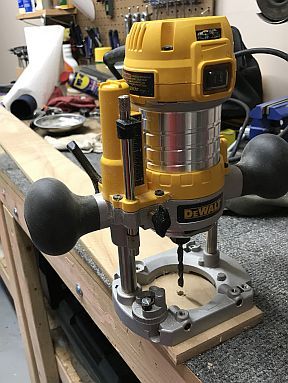
Shop vacuum -- Cutting wood makes a damn mess. If you want, I suppose you could get by with a broom and dust pan, but a capable shop vac makes life easier. But which one? My answer is simple. When you're browsing the selection at your local Home Depot or Lowes, get the one that costs $100.00.
Nail Gun -- If you already have an air compressor at home (for filling tires, basketballs, blowing things off, etc...) you’re halfway there. I picked up an open-box 18ga brad nailer off of Amazon a while ago. It is awesome for tacking on small trim pieces and barely leaves a nail hole. Highly recommended if you can swing it.
Advanced:
Table saw -- while many say that a table saw is the heart of any wood shop, for most of us it isn't going to be an early purchase or practical. I've been fortunate enough to have anytime access to one thanks to my neighbor (thanks Lloyd!) and recently picked up a small one from a garage sale. They excel at rip cuts and are extremely versatile. With certain sleds and accessories, you can do almost anything on a table saw. But they can be pricey and can take up a lot of room. If you have extensive rip cuts that you need done but don’t have a table saw or they may be too big a task for your circular saw, ask the friendly faces at Home Depot or Lowes to make a cut for you. When you buy lumber you’re allowed two free cuts per, and you can usually sweet talk them into more. Just leave them a nice review.
Planer -- This machine let's you control the thickness of your materials. Very nice for if you're making a table top out of multiple boards and want to ensure they're all the exact same thickness, among other things. They can also remove surface imperfections and leave the planed surface clean and almost finish-ready. They also make one HELL of a mess. Use it in your driveway with your shop vac on hand.
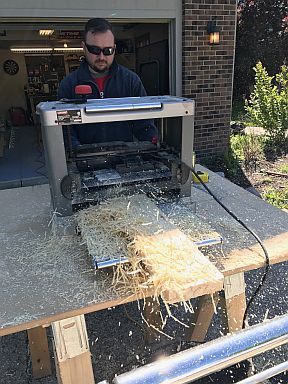
There are of course more advanced tools you will see in professional wood shops, but I'm not trying to cover that full scope. This is for the hobbyist.
B. Get a plan. Some people are good at throwing caution to the wind and cutting wood and slapping shit together. I am not one of those people. Thankfully we live in the age of YouTube, Pinterest, and websites like Ana-white.com and rogueengineer.com . There are all kinds of plans and projects on these sources with materials lists, cut lists, finishing tips, etc... Even if the project isn't to your scale, you can always crunch the numbers and adjust to your needs. Brush up on your fractions. I have a little notebook where each page is grid paper. I like to sketch out projects to double check my measurements and make sure the math adds up.
C. Don't be afraid to make a mistake. You learn by doing and you learn from your mistakes. I get better with each project by learning from my previous mistakes. And for the most part, wood is cheap. Of course, by this I don’t mean throw caution to the wind when it comes to safety, which brings us to...
D. BE CAREFUL! Power tools are dangerous. Hell, regular hand tools can be dangerous. I have a few scars to prove that, but thankfully still have all my fingers. In my opinion, two tools you should have a healthy fear of are the table saw and the router.
E. A few tips I’ve learned over the years:
“A little putty and paint makes a carpenter what he ain’t”. A sander, some putty or filler, and some paint can fix a lot of boo boos.
A sharp knife is a safe knife. Too true. If you try to force work pieces against dull blades, you are greatly increasing the risk of something slipping and sending that blade into your fingers. Keep your tools sharp.
If you have access to some of the advanced tools like a planer and table saw, you can make good use of salvaged wood (just watch for nails!). For example, the trestle coffee table pictured towards the top of this post was make exclusively from wood I found behind a dumpster. That's right, I was dumpster diving.
Work with a friend or neighbor if possible. It will lessen the physical load, give you another set of hands, and put two brains together when trying to solve a problem. Besides, who likes drinking woodworking alone?
That's all for now. Have fun making sawdust!
-JR
0 notes
Text

Drawing a truncated cube and a cuboctahedron from a cube....
As for understanding truncation: You can imagine having a cheese cube and just cutting of the vertices...
- - -- --- -----
Truncated cubes and cuboctahedra are Archimedian solids.
----- --- -- - -
I used isometric dot paper.
#math#geometry#math illustration#cube#truncated cube#cuboactahedron#archimedian solid#geometric drawing#isometric#isometric paper#mathematics#math art#polyhedra#polyhedron#shapes#knottys math art#mathy stuffy#mathy stuff#knotty et al
376 notes
·
View notes
Text
Snub Dodecahedron

Today I finished the drawing of the Snub dodecahedron in isometric projection.
For drawing a snub dodecahedron I started to draw a dodecahedron. Then I altered it into an isocidodecahedron. Then I turned it into a truncated icosidodecahedron. And then, finally, after all these steps I could make the snub dodecahedron from this.
- - -- ---
Here are the mentioned shapes (I already drew as well):


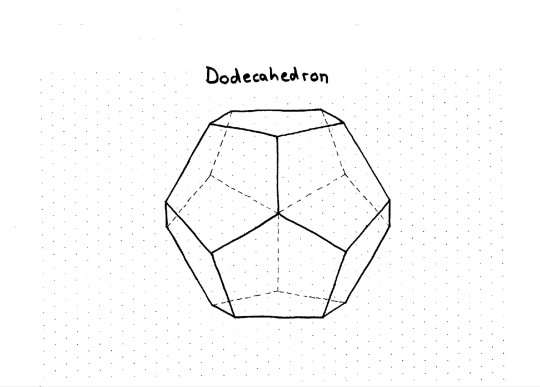
(a few lines are missing in that last scanned img of the truncated icosidodeca. i want to make better digital img files of my shapes soon. )
#polyhedra#polyhedron#archimedian solid#archimedian solids#geometey#shapes#shape#snub dodecahedron#dodecahedron#icosidodecahedron#truncated icosidodecahedron#truncation#truncated#truncated shapes#geometry#math#knottys math#knottys math art#isometric#isometry
23 notes
·
View notes
Text

Pseudosphere and dini surface
^ Visualization about the transformation of a pseudosphere into a dini surface.
v Pseudosphere

#math art#geometry#mathy#math#curvature#pseudosphere#dini surface#negative curvature#knottys art#non-euclidean#non-euclidean geometry#art#shapes#visualization#geometric
91 notes
·
View notes
Text

Blossoming into the obscure unknown
[2024/03/12]
#inpired by:#dini surface#spiral#colorful#art#knottys art#geometry#math#knotty et al#shapes#colors#color
90 notes
·
View notes
Text
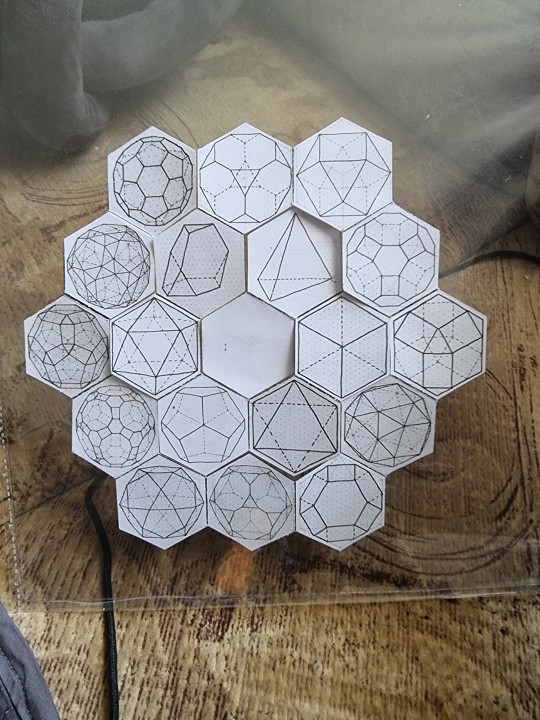

Front: 5 platonic solids and the 13 Archimedean solids
Back: Root-like structures, depicting some relationships between these 18 solids.
Both simultaneously (Holding it against light source):

#platonic solids#archimedean solids#geometry#geometric#solids#shapes#shape soup#polyhedra#polyhedron#shape#hexagon#hexagonal#hexagons#hexagonal book#interactive art#knottys math#math art
81 notes
·
View notes
Text

Pentakis Dodecahedron

This one turned out not so well... The light grey of its dual, the truncated icosahedron, is far too dark and hence too visible.
And i made a tiny mistake regarding two vertices (in the picture: below the center, but in the middle)
Most catalan solids look not so aesthetically pleasing in isometric projection with these viewing angles as they look too symmetrical and it is difficult to identify a 3-dimensional shape in this "line soup".
As these drawings only contain the edges of these solids, I might add shading to each catalan solid once I will have drawn all 13 catalan solids and will have scanned them. After creating clean digital files I might start to shade the originals. (i do not know yet which medium I want to use, preferably either pencils or creating shade effects with thin lines of ink... ) [When I have clean files i can print/copy the grid drawings quickly and cheaply - so I can experiment more. If i have already shaded them and print/copy the shaded ones the prints will be less cheap (consume far more ink) and the printing quality might suck.]
#geometry#knottys art#polyhedra#math#polyhedron#shapes#catalan solid#pentakis dodecahedron#archimedean dual#geometric#isometric#isometric projection
31 notes
·
View notes
Text
Polytope info card of the Truncated Cuboctahedron

Today I finished this friend-shaped archimedian solid.
I drew the tiny drawing in the down right corner of the card and resized it with my printer.
The drawing:
I drew this Truncated cuboctahedron in an isometric projection and used my beloved isometric dot paper.
To start with the truncated cuboctahedron I started to draw a cube (with pencil).
Then I altered the cube by drawing a cuboctahedron in it (with pencil as well). I truncated th vertices of the cube like in the depiction below:
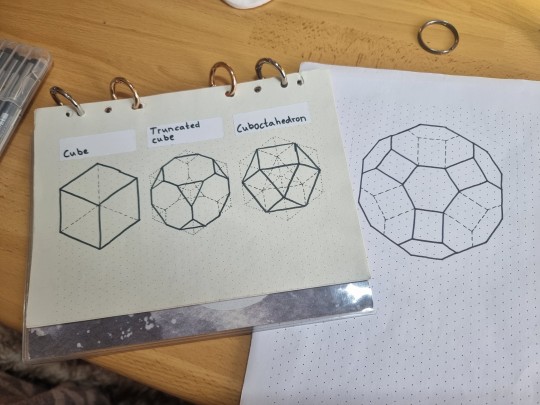
Then I altered the cuboctahedron drawing with another truncation - resulting in the truncated cuboctahedron shape.
[For clarification: I later erased the pencil lines of the cube and cuboctahedron, because it became messy and these lines were just there to help in the drawing process.
For the photo I laid pictures of a cube and cuboctahedron besides the truncated cuboctahedron drawing to show the similarity between these shapes - and present the principle of truncation visually.)
#polytopes#polytope#polyhedra#polyhedron#cuboctahedron#truncated cuboctahedron#archimedian solid#archimedian solids#geometry#math#mathy stuffy#knottys math#polytope info cards#math art#mathy#mathematics
74 notes
·
View notes